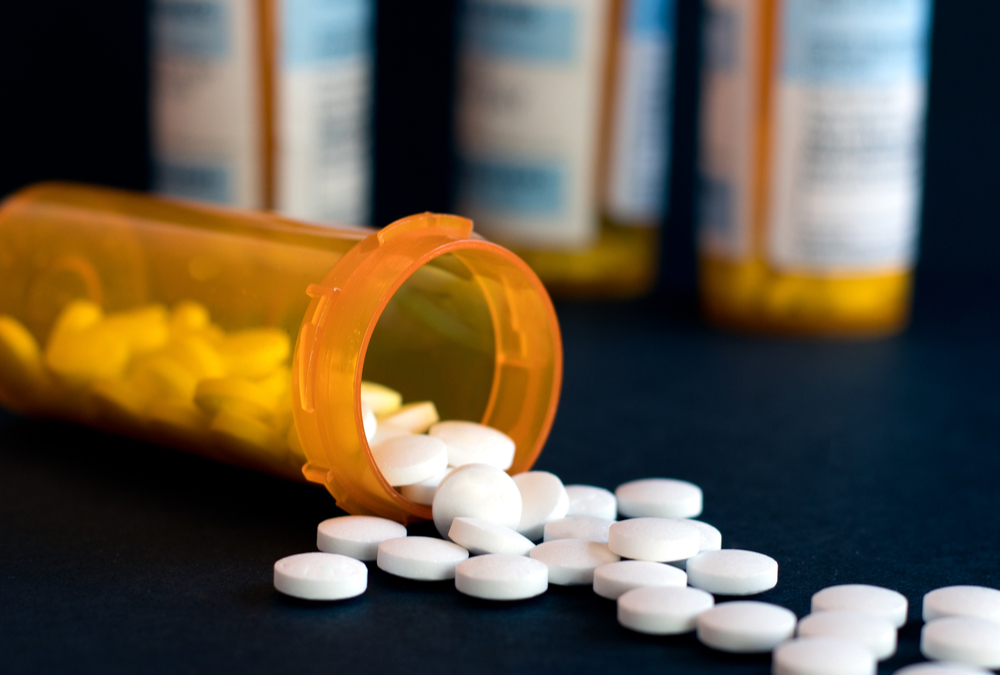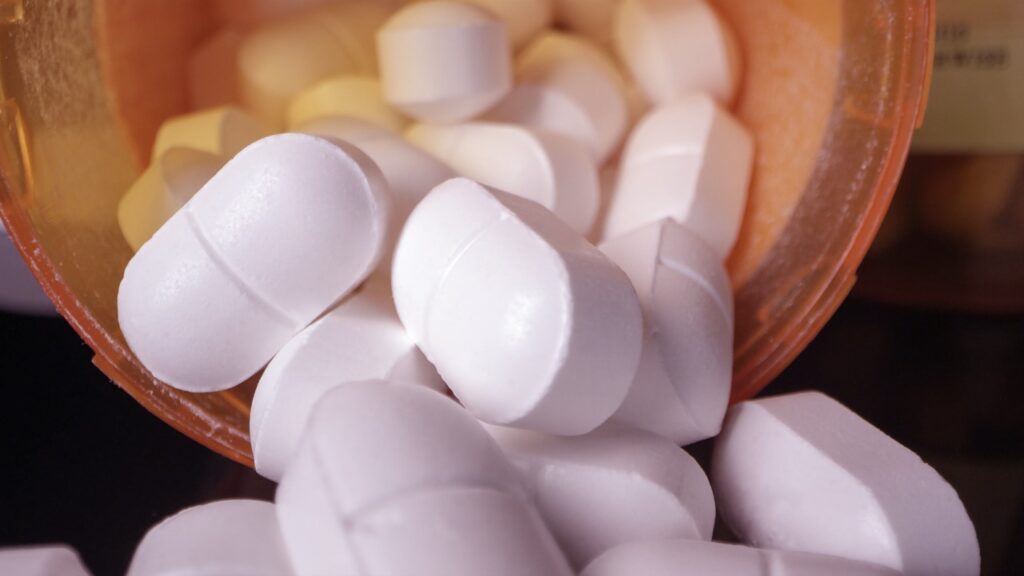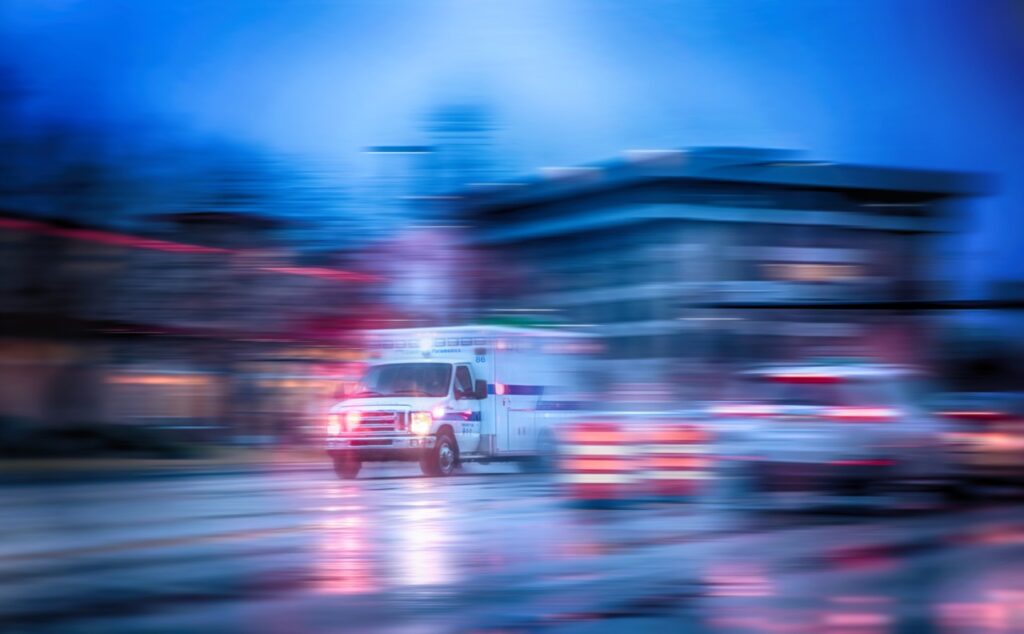Drug overdose is the leading cause of accidental death in the United States, and the most common fatal overdose is opioids. While opioid misuse among teens has been going down, two in three adults treated for opioid use disorder started using opioids when they were younger than age 25.
With the opioid crisis a national public health emergency and 1 in 8 adolescents being prescribed opioids each year, how can we keep teens safe? Everyone has a part to play in preventing opioid misuse and addiction.
What Are Opioids?
Opioids are a class of highly addictive drugs that include the illegal drug heroin, synthetic opioids like fentanyl, and legal pain relievers that are prescribed medically, like oxycodone (OxyContin®), hydrocodone (Vicodin®), codeine, and morphine. You may hear kids call them “happy pills,” “percs,” “oxy,” or “vikes.” Opioids can produce feelings of pleasure and manage severe and chronic pain, but they can change the chemistry of the brain, causing addictions that disrupt lives and relationships.
What Is Opioid Misuse?
Opioid misuse is when someone:
- Takes opioids in a way or dose other than prescribed
- Takes somebody else’s medicine
- Takes the medicine to get high
Signs of Opioid Misuse
Recognizing the warning signs of opioid misuse is important for early intervention and for helping young people be their best, healthiest selves.
Signs of opioid misuse include:
- Behavior changes, like increased dangerous activities
- Changes in friend groups
- Quick mood changes, like episodes of energy, nervousness, or crankiness
- Changes in grooming habits, like not bathing, changing clothes, or brushing their teeth
- Constipation
- Drowsiness
- Changes in sleep habits
- Disappearance of pills, money, and valuables
- School problems like missing school and failing grades
- Getting into trouble with the law
Signs of opioid overdose include:
- Pale, clammy face
- Limp body
- Blue fingernails or lips
- Vomiting or gurgling noises
- Slowed or stopped breathing or heartbeat
Opioid misuse can be deadly. According to the Centers for Disease Control, 70% of the 67,000 deaths from overdose in 2018 were due to opioids, according to the Centers for Disease Control and Prevention.
Opioid Fact Sheet
hbspt.cta.load(7217673, ’52d902be-9845-4fe0-b808-a03c9fdce49b’, {});
How Common is Adolescent Opioid Misuse?
Research in 2018 found that in the past year:
- ~699,000 adolescents aged 12 to 17 had misused opioids
- ~1.9 million young adults aged 18 to 25 had misused opioids
Risk Factors
Certain teens and young adults are at a higher risk for opioid misuse and addiction.
Risk factors include:
- Untreated mental health issues like depression, anxiety, and personality disorders. These people and those with untreated attention deficit hyperactivity disorder (ADHD) and other learning problems can turn to illicit drugs as a way to self-medicate.
- Tendency toward risk-taking or thrill-seeking behavior and instant gratification
- Associating with known drug users. 57% of 12- to 17-year-olds who misused prescription opioids got them from a friend or relative
- Lack of parental supervision and consistent limits
- Personal or family history of substance abuse
- Living in a home where substance abuse is accepted or where repeated conflicts or verbal and physical abuse happen
Prevention
There are many ways that caring parents, family, and community members can prevent opioid misuse among adolescents and young adults.
What Can Parents and Family Members Do?
- Talk with your teen or young adult.. Discuss how deadly opioid drug use can be and how to treat pain cautiously. Maintain a healthy relationship and promote healthy expectations and clear standards. Kids who are attached to their families and concerned about doing well in school are less likely to abuse substances.
- Talk to a doctor. Discuss how to manage your child’s pain, including ways that don’t include opioids. These can include non-addictive pain medications like ibuprofen and naproxen, as well as complementary treatments like physical therapy. Ask about any side effects and follow up regularly.
- Lead by example. Send a healthy message to your children by modeling the behavior you want to see. This means not using opioids recreationally, only for responsible pain management, as directed if prescribed.
- Safe storage. If you take opioid medication, it’s important to lock up your prescription medication. Keep track of how much you take and what’s left, so you can know if any goes missing. If your teen is prescribed an opioid for an injury, dental procedure, or post-operative condition, you can keep the medication and monitor its usage.
- Do not share your opioids. Medication that is prescribed to you can be harmful to your child. If your child is in pain, seek medical attention for proper diagnosis and treatment.
- Dispose of leftover medication responsibly. While it can be tempting to hold onto leftover medication just in case, the FDA recommends getting rid of unused or expired medication to prevent misuse and avoid deadly consequences. Many local communities offer take-back programs for prescription medications. If no take-back program is available near you, certain medications are on the FDA’s “flush list.”
- Get help. If you think you or your family member are misusing opioid drugs or forming an addiction, recovery is possible. Reach out to family, friends, and a healthcare professional.
- Know how to react in an overdose emergency. Talk to your child’s doctor about Naloxone, which can prevent opioid overdose deaths. Whether Naloxone is used or not, always call 911 if you think someone is overdosing.
What Can Schools Do?
Students who use substances have a higher risk of failing or dropping out of school. To do its part to tackle the opioid epidemic, the U.S. Department of Education has goals to:
- Help educate students, families and educators about the dangers of opioid misuse and about ways to prevent and overcome opioid addiction
- Support state and local education agency efforts to prevent and reduce opioid misuse
The Department of Education has stated that schools have a responsibility to create safe environments and positive cultures for students and to address risk factors in their students. One recommendation is to provide evidence-based prevention courses.
At 3rd Millennium Classrooms, we help you address substance abuse issues so students can make better decisions and thrive. Our Other Drugs Course is a personalized prevention and intervention course that covers prescription drug misuse and educates students on opiates, stimulants, sedatives, ecstasy, and hallucinogens. By giving personalized feedback and addressing risk factors, effects, and consequences, the course empowers students to change their attitudes and behaviors toward substance misuse. Watch the video to learn more about this course.
By fostering awareness, together we can better support our youth and prevent opioid overdoses and deaths.
References
-
“Understanding the Epidemic.” Centers for Disease Control and Prevention. https://www.cdc.gov/drugoverdose/epidemic/index.html
-
“The Opioid Epidemic: A Needed Focus On Adolescents And Young Adults.” Health Affairs. https://www.healthaffairs.org/do/10.1377/hblog20191115.977344/full/
-
“Opioid Overdose Risk Factors for Teens, College-Aged Youth Mirror Adults.” Michigan Medicine Health Lab. https://labblog.uofmhealth.org/rounds/opioid-overdose-risk-factors-for-teens-college-aged-youth-mirror-adults
-
“Key Substance Use and Mental Health Indicators in the United States: Results from the 2018 National Survey on Drug Use and Health.” Substance Abuse and Mental Health Services Administration. https://www.samhsa.gov/data/sites/default/files/cbhsq-reports/NSDUHNationalFindingsReport2018/NSDUHNationalFindingsReport2018.pdf
-
“Results from the 2016 National Survey on Drug Use and Health: Detailed Tables. SAMHSA. https://www.samhsa.gov/data/sites/default/files/NSDUH-DetTabs-2016/NSDUH-DetTabs-2016.pdf
-
“Combating the Opioid Crisis and Other Substance Misuse: Schools, Students, Families.” Department of Education. https://www.ed.gov/opioids/




